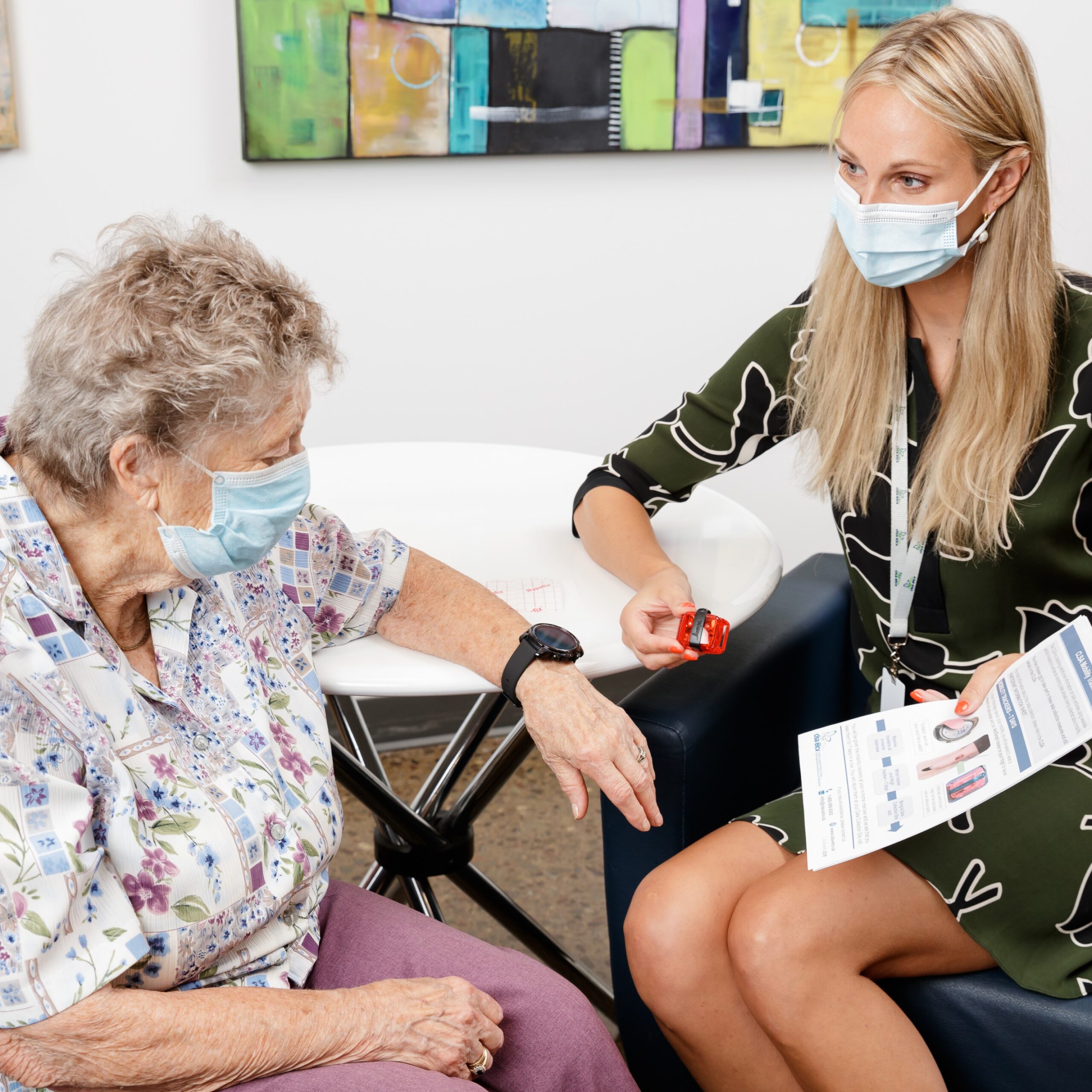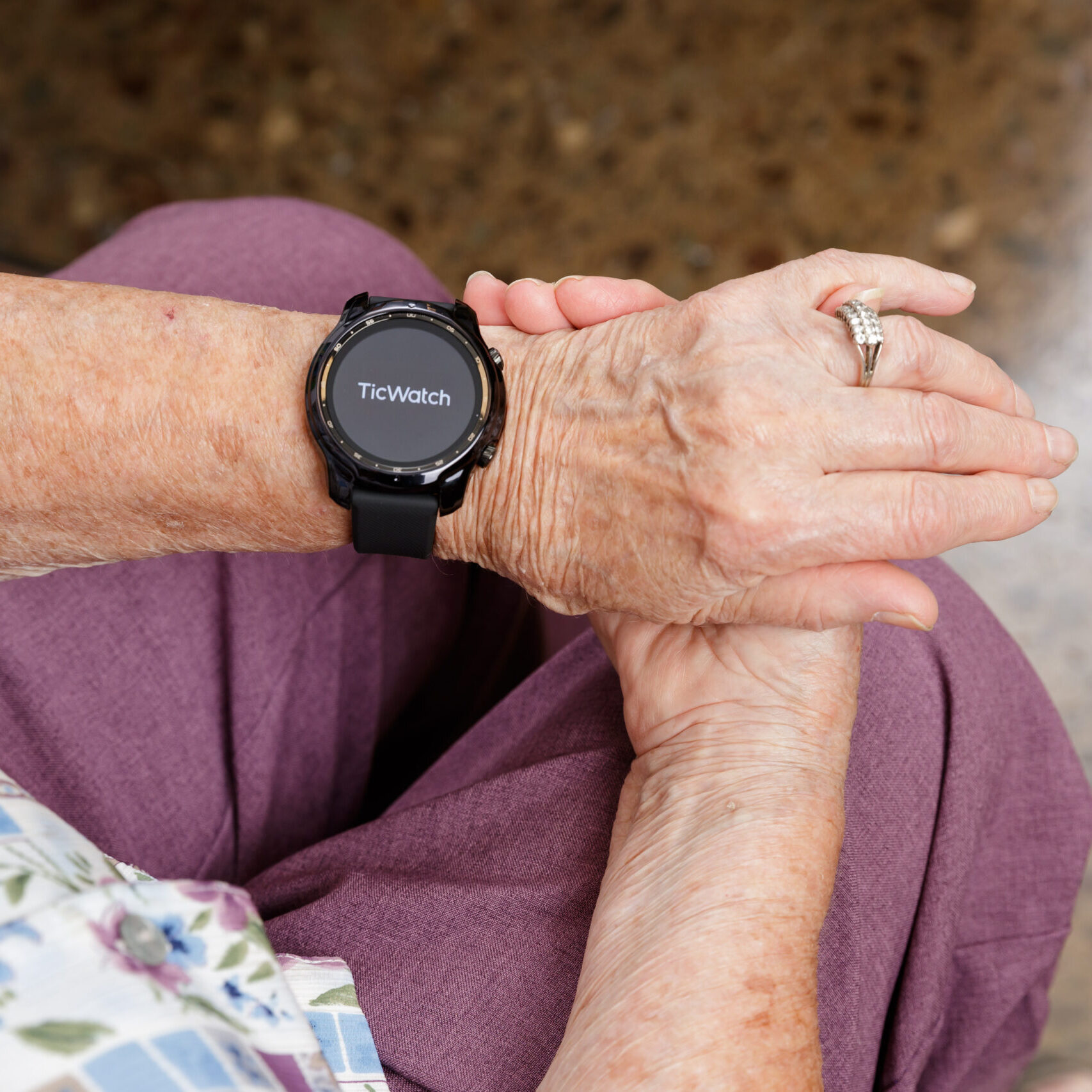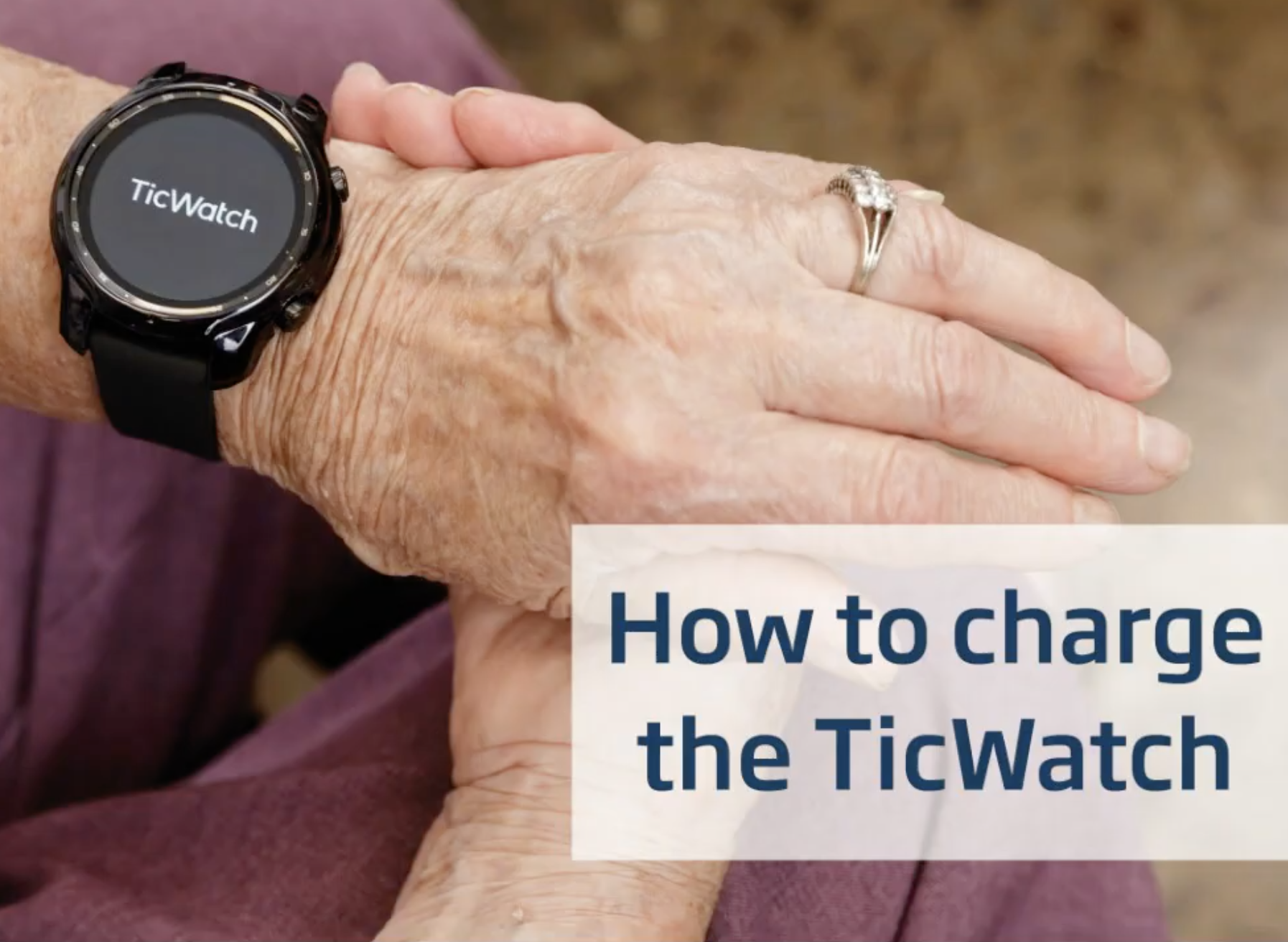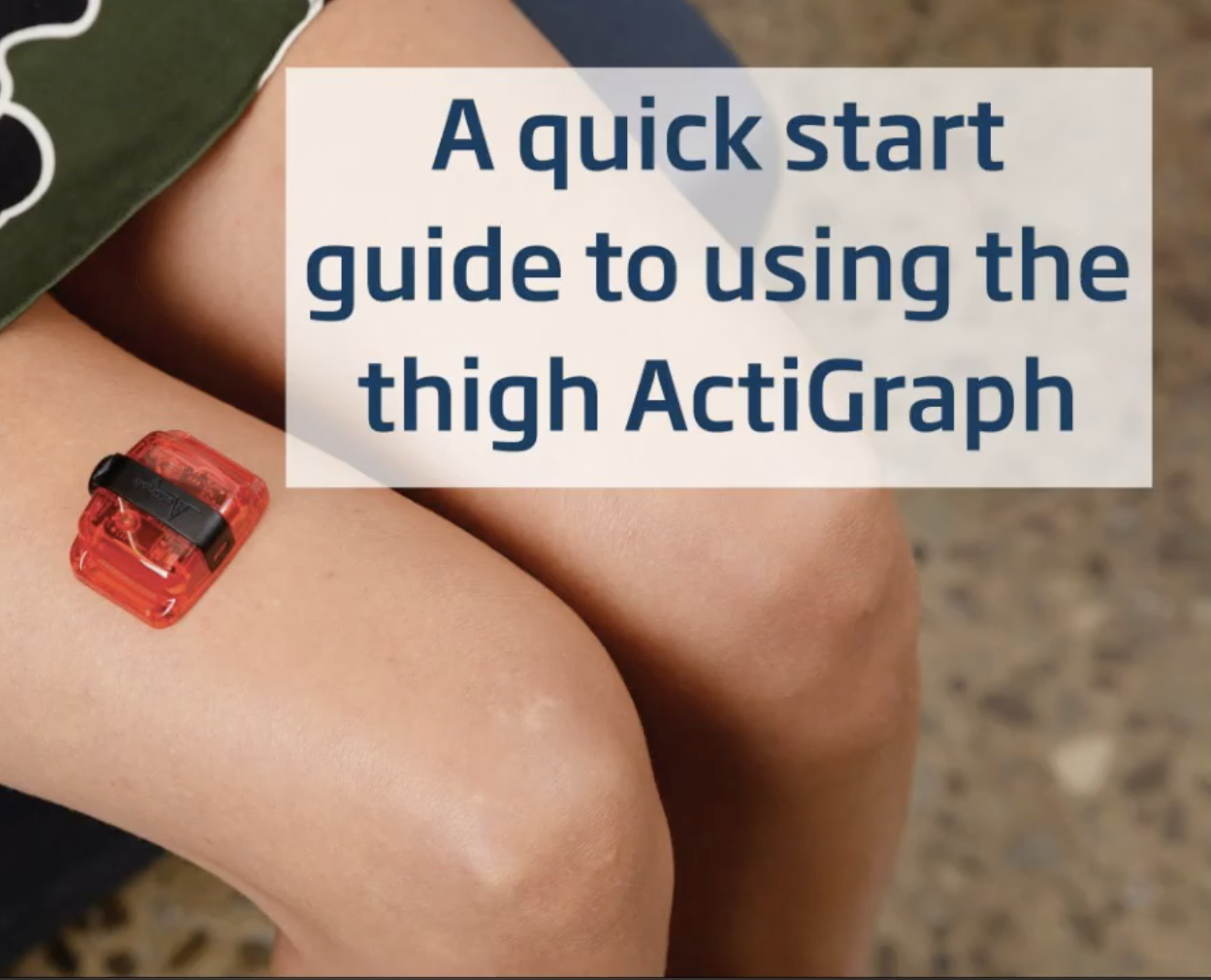There are no known medical risks to wearing mobility trackers. There are some minor discomforts you may have from using these devices. First, there is the general feeling of being aware that you are wearing these devices while you go about your usual activities. The level of discomfort, however, should be small and hopefully go away as you get used to having them on. You may find that the bands and adhesives on the thigh ActiGraph may cause skin irritation. There is also a slight chance that you may feel as if you are being watched due to being tracked by the GPS device in the TicWatch.
TicWatch & Thigh ActiGraph
CLSA CORE STUDY
Research shows that having mobility limitations may have a negative impact on your physical abilities, visits to emergency departments, hospitalization, and on admission to nursing homes. Mobility can be monitored through activity trackers that can record such things such as step counts, number of stairs climbed, distance traveled, type of travel (e.g., car, public transit, walking, cycling), number of minutes active, body position (i.e., lying, sitting, or standing).
Participants who consent to these data collection measures will be asked to wear two mobility trackers for a period of seven days:
- A TicWatch on their wrist
- An ActiGraph tracker on their thigh
Mobility trackers are provided at the in-home interview and then returned during the Data Collection Site visit.

Instructional Videos
Participant Resources
View information packages, consent forms and other documents relevant to your participation, including:

The wearable technology solution used by the CLSA for mobility measurement was developed by the McMaster Monitoring My Mobility (MacM3) team. For technical validation information please see: Beauchamp M, Kirkwood R, Cooper C, Brown M, Newbold KB, Scott D, et al. (2023) Monitoring mobility in older adults using a Global Positioning System (GPS) smartwatch and accelerometer: A validation study. PLoS ONE 18(12): e0296159.
For questions, please contact Marla Beauchamp, School of Rehabilitation Science, McMaster University.

Frequently Asked Questions
Find answers to some of the most common queries about the CLSA.
The data collected on all of the trackers and their applications are de-identified (meaning the data are connected to an ID number, not to your name or any other personal identifying information). This means that if a tracker is lost or an unauthorized person tries to access the data, they will not be able to connect the data or tracker back to you. Further, data are protected by encryption that cannot be accessed without having credentials. These credentials are only known to key CLSA staff. No identifiable information will be shared with anyone outside of our established CLSA protocols. The data from this part of the study are kept, like all CLSA data, on secure servers located at McMaster University.
You will be asked to complete this data collection every three years as part of your participation in the core CLSA study.
You will not be able to see most of the data the trackers collect or keep a copy of any of the data.
It is not possible to sign up for this data collection. Only CLSA participants who take part in in-home interviews and visits to Data Collection Sites are eligible to take part.
Your participation in this part of the CLSA is completely voluntary, and choosing not to wear these devices will not affect your participation in the CLSA overall. If you do agree, you may also decide to stop at any time.
If you are having issues with the mobility trackers, please try the following:
- Watch our instructional videos.
- Be sure to charge your TicWatch each night.
- Turn the TicWatch off and back on if you are experiencing any technical problems.
- Try your best to wear the devices for 7 days; if you are experiencing problems, keep the devices in a safe place and return them at your Data Collection Site visit.
To collect data about mobility, the TicWatch is worn on the non-dominant wrist for seven days in a row, and a tracker is worn on the upper leg (called the thigh ActiGraph) for the same 7 days in a row.
The mobility trackers are provided at your in-home interview and worn for seven days. You will return both trackers to your Data Collection Site visit.
The TicWatch and thigh ActiGraph will record information about your movements throughout the day (e.g., step count, body position, etc.).
The thigh ActiGraph collects accelerometer data, which is information about speed of movement in any direction and is used to interpret your daily activity.
The TicWatch collects accelerometer data as well, and also gyroscopic data, heart rate, ambient light, and location. All of this data is used to track activity intensity and activity transition (the point when you change from one activity to another – such as from sitting to walking), as well as how you travel (car, public transit, bicycle, or walking), and the types of places you visit in your day. The TicWatch tracks location with GPS data. Specifically, longitude and latitude data from locations you visit are collected. These coordinates are turned into destination information only (restaurant, shopping, entertainment, hospital, etc.) in the research data. The specific longitude and latitude data is encrypted on the device and only accessible to the researchers who have the decryption algorithm (like a password) to do the translation from specific location data into destination information. For example, we would be interested to know that you travelled 4 km from your home by bus to get to a grocery store.























